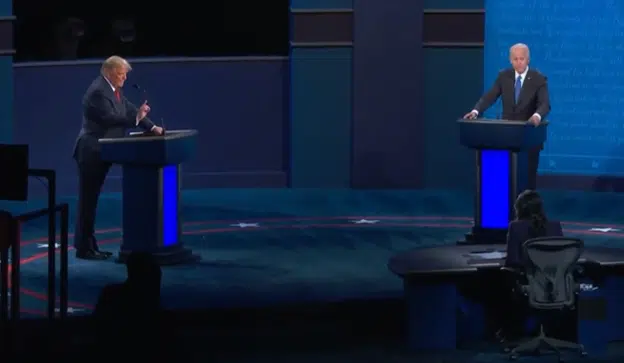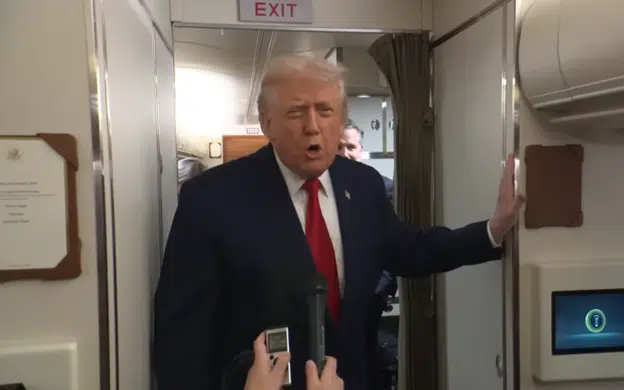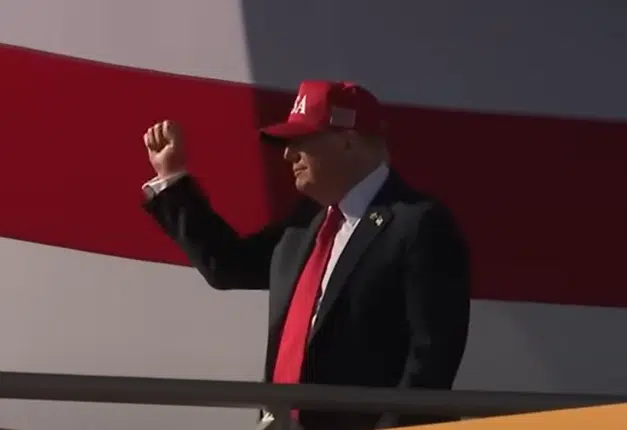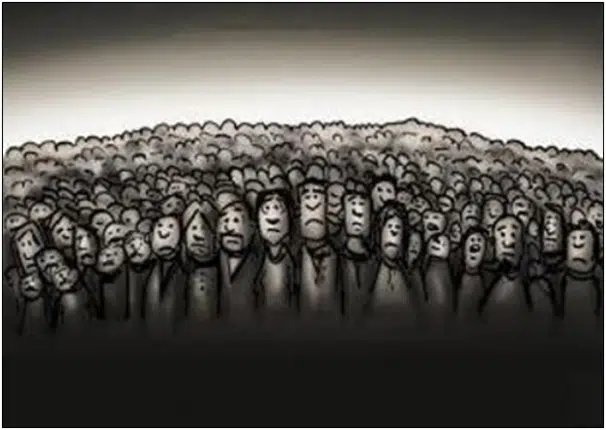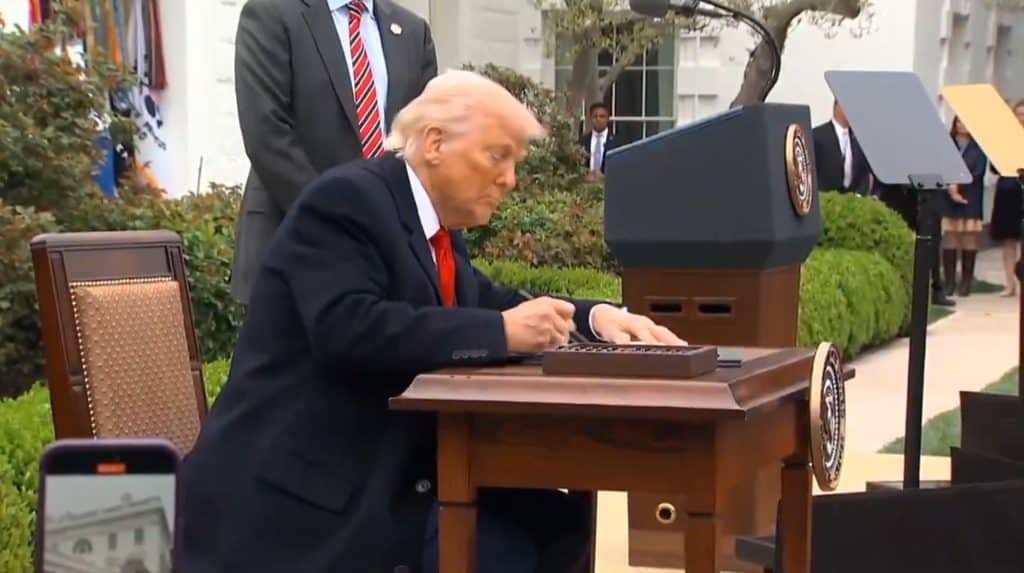
Commodities prices and interest rates collapsed across the board following President Donald Trump’s April 2 announcement of reciprocal tariffs on U.S. trade partners despite Congressional Democrats’ predictions that inflation would increase as a result of the tariffs.
Crude oil went from $72.22 prior to the announcement down to $66.12 per barrel as of this writing, a 8.4 percent decrease.
Hot rolled coil steel’s June contracts went from $822 to $817 per short ton, a 0.6 percent decrease.
Wheat went from 540’0 cents per bushel to 539’0, a 0.2 percent decrease.
Corn started at 458’4 cents per bushel, dropped very significantly to 450’4, but has recovered to 460’4, a slight 0.4 percent increase, relatively unchanged.
Gold went from $3,133.30 an ounce down to $3,069.80, a 2 percent decrease.
Silver went from $34.64 an ounce down to $32.11, a 7.3 percent decrease.
Live cattle from 207.35 cents per pound down to $205.67, a 0.8 percent decrease.
Soybeans went from 1025’0 cents per bushel down to 1007’4, a 1.7 percent decrease.
It’s across the board for the most part. There are some exceptions. Natural gas, for which demand including for electricity remains high, edged up slightly from $4.076 per MMBtu to $4.146, a 1.7 percent increase.
But we can see the overall trend is actually lower prices, not higher prices. The reaction to tariffs is not to buy and bid up commodities, increasing inflation, it’s the opposite which is to sell them. Keep that in mind.
And it is happening to interest rates — another very reliable gauge of inflation expectations — with 10-year treasuries dropped from 4.2 percent to 4.01 percent. 2-year treasuries did the same thing, falling from 3.91 percent prior to the announcement down to 3.72 percent.
All this is the exact opposite of what Democrats were predicting would happen as a result of the tariffs.
On just March 2, Senate Minority Leader Chuck Schumer (D-N.Y.) boldly predicted, “President Trump’s tariffs are going to raise prices on families by as much as $1,200 per year.”
On March 11, just yesterday, Schumer declared, “inflation has gone up under Donald Trump, from groceries to retail to cars.” (See below: Both groceries and cars didn’t experience any price increases in February, the first full month of Trump’s presidency.)
On Feb. 1, House Minority Leader Hakeem Jeffries (D-N.Y.) similarly suggested that prices would go up, stating, “The tariffs imposed by the administration and strongly supported by House Republicans will not lower the high cost of living for everyday Americans. Instead, it will likely do the exact opposite and make life more expensive.”
On March 3, Sen. Elizabeth Warren (D-Mass.) also projected price hikes, saying, “Donald Trump promised on ‘Day 1’ to lower costs, but instead working families now have to worry about giant corporations using his haphazard tariff announcements as an excuse to raise prices – and the Trump Administration has no plan to stop it.”
None of it was true, though. In February, consumer inflation dropped from 3 percent annualized in January to 2.8 percent, according to the latest data by the Bureau of Labor Statistics.
Now, with commodities and interest rates and therefore future inflation expectations dropping, what does everyone think will happen with inflation going forward?
Generally, trade partners will certainly respond in kind and besides tariffs, another way to guarantee that outcome is to weaken their currencies — so-called currency manipulation — in order to boost exports to the United States.
China is already doing it again. In mid-March the exchange rate of the yuan to the dollar was .1383, now it’s down .1376, not much but that is a 0.5 percent depreciation.
Other trade partners will eventually follow suit, especially if their export economies suffer in the short term under the weight of the tariffs. Their economy will slow down and they’ll weaken their currencies in response to get a boost. Bet on it.
That will make the U.S. dollar stronger ultimately.
And prices will go down thanks to the inverse relationship between the dollar and commodities, too, with a strong dollar correlating with lower commodities prices and a weak dollar correlating to higher commodities prices.

Asset prices are dropping for equities and cryptocurrencies, too. When money is withdrawn from assets whether it be stocks, crypto or commodities and put into bonds, prices go down!
This has generally been true historically, too. For example, the Great Depression is often wrongly blamed on tariffs. It’s wrong, the issues had to do with competitive currency devaluations as economies came off the interwar gold standard, but let’s roll with the hypothesis. The problem in the Great Depression wasn’t inflation, it was deflation. Prices were falling.
So, do tariffs cause inflation or deflation? Myopic pundits might try to dissemble and say both. They should make up their minds.
The answer is actually neither. As Milton Friedman always taught “inflation is always and everywhere a monetary phenomenon…” or an increase in the money supply beyond production. Tariffs neither cause nor prevent money printing. Central banks do that all by themselves.
Maybe what’s really happening is whatever negative news there happens to be, investors and their mouthpieces will just ascribe that to tariffs. But good luck changing people’s expectations from what they’ve been spoon-fed for three months.
The American people were told prices would go up with tariffs — and they’re going down. Who could have foreseen such a likely outcome?
Robert Romano is the Executive Director of Americans for Limited Government Foundation.


